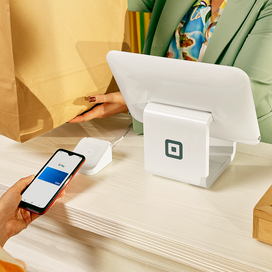Table of contents
This article is for educational purposes and does not constitute legal, financial, or tax advice. For specific advice applicable to your business, please contact a professional.
When you run a business that sells any product or service, the cost of goods sold (COGS) is an essential metric. Cost of goods sold is a major input in overall profitability, so understanding how COGS works and flows into your business results is vital for any business owner or manager.
If you want to know how cost of goods sold works, take a look at the cost of goods formula and learn how you can put cost of goods sold to work to help improve your long-term business outcomes.
What is cost of goods sold and how do you calculate it?
Cost of goods sold is the total amount your business paid as a cost directly related to the sale of products.
Depending on your business, that may include products purchased for resale, raw materials, packaging, and direct labor related to producing or selling the goods.
In other words, the materials that go into the product and the labor that goes into making each unit may be included in cost of goods sold. If you incur sales costs specific to that item, like commissions, those costs may also be included in COGS. The accounting term for this is direct costs.
If a cost is general for your business, like rent, a new machine, or common marketing costs, it isn’t a cost 100% dedicated to a specific item. Those indirect costs are considered overhead, not the cost of goods sold.
Cost of goods sold is an important number for business owners and managers to track. That is the absolute lowest price you can sell a product to break even. Any additional margin goes back to covering overhead and eventually profit. If you don’t know your COGS and break-even point, you don’t know if you’re making or losing money.
To help you track your profitability without an MBA or accounting degree, check out the Square profit and loss template for any business. Cost of goods sold is a major input in profit and loss statements, which are typically called income statements by large corporations. The terms “profit and loss statement” and “income statement” are used interchangeably.
Calculating cost of goods sold
Accountants and bookkeepers use a standard formula to calculate cost of goods sold for physical products:
Beginning Inventory + Purchases – Ending Inventory = Cost of Goods Sold
If you have any manufacturing labor costs or direct sales costs, you can include those as well, but that may not apply to all businesses.
Inventory costs may be a little more complicated to calculate depending on your business’s inventory method. If you use LIFO, “last in, first out,” or FIFO, “first in, first out,” for example, the costs you include may vary.
Learn more: Check out our free Cash Flow Template for Small-Business Owners
Cost of goods sold examples
Cost of goods sold may also be referred to as “cost of sales.” Public companies are required by law to share this information in their annual reports, so you can always look at cost of goods sold, or cost of sales, for any company listed on a major U.S. stock exchange.
Here’s a hypothetical example for a small business, calculated using the standard cost of goods sold formula:
Beginning Inventory + Purchases – Ending Inventory = Cost of Goods Sold
Beginning Inventory: $15,000
Purchases: $20,000
Goods Available for Sale: $35,000
Less: Ending Inventory: ($10,000)
Cost of Goods Sold: $25,000
Learning from cost of goods sold
To get more comfortable with your business’s numbers, think of your business in these ways to better understand your COGS:
- Cost of goods sold is a major contributor to margins: Your business will never make money if cost of goods sold is higher than your product pricing. Always track COGS to help ensure you generate an operating profit.
- Get a fine-tuned understanding of COGS: Don’t just look at the high-level COGS result. Look at every underlying cost for savings opportunities.
- Strategically reduce cost of goods sold: Even small progress on COGS leads to higher profits. For low-margin businesses like restaurants and general retailers, a small difference in COGS can make or break your business.
- Keep a long-term focus: Take care to avoid making cuts that harm your customer experience, product quality, or employee experience, as they could turn around and harm your long-term outlook.
You don’t need a strong financial background to use COGS to build a more profitable long-term business strategy. Anyone can use COGS to improve their business.
Business metrics that use cost of goods sold
Understanding your company’s COGS is an important step on the path to understanding its overall health. While informative on it’s own, COGS is also a critical input (or sidekick) to other key performance metrics such as gross profit, operating expenses, overhead costs, and variable costs.
Let’s dive into how COGS relates to the following business metrics:
- Gross profit: Gross profit, or gross income, is the profit your business makes after subtracting what it costs to produce and sell your products or services. This is where COGS comes in. COGS is subtracted from your overall revenue (or sales) in order to calculate your gross profit or gross profit margin. Gross profit keeps a pulse on your company’s efficiency in using both supplies and labor to bring your products or services to customers.
- Operating expenses: Operating expenses are exactly how they sound. They’re the costs of running your business’s normal operations that usually cannot be avoided. Understanding your operating expenses will help you better manage your cash flow and streamline operations. Operating expenses are not included in COGS.
- Overhead costs: Overhead costs are the actual expenses to run your business outside of production and operating costs — think fixed costs like rent, utilities, or insurance. Overhead costs are easy to overlook because they’re not directly tied to generating revenue, but they should be audited on a regular basis to reduce unnecessary costs and increase profitability. Overhead costs are most commonly listed as a separate line item from COGS.
- Variable costs: These expenses include all of the variable direct costs in COGS but exclude direct, fixed overhead costs. Variable costs are affected by your business activity, and, as the name implies, they can fluctuate from month to month. Variable costs are considered part of the costs that contribute to overall COGS.
Using cost of goods sold to improve profitability
Large companies hire teams of accountants and FP&A, (financial planning and analysis) analysts to review every cost with a fine-tooth comb. While you may want to seek professional help, you can do your own calculation, but it still likely has opportunities to improve through your own COGS analysis. Businesses that use the Square retail POS system have quick access to this information on the Square Dashboard with analytics, inventory, and other reporting tools.
When you know what makes up your business costs, you can take steps to keep them under control and work toward your growth and profitability goals. Whether you’re trying to create or maintain a business to support your family or set yourself up for retirement, COGS is almost certainly part of the formula. With a good understanding of how it works, you are in better control of your company’s destiny.
![]()












